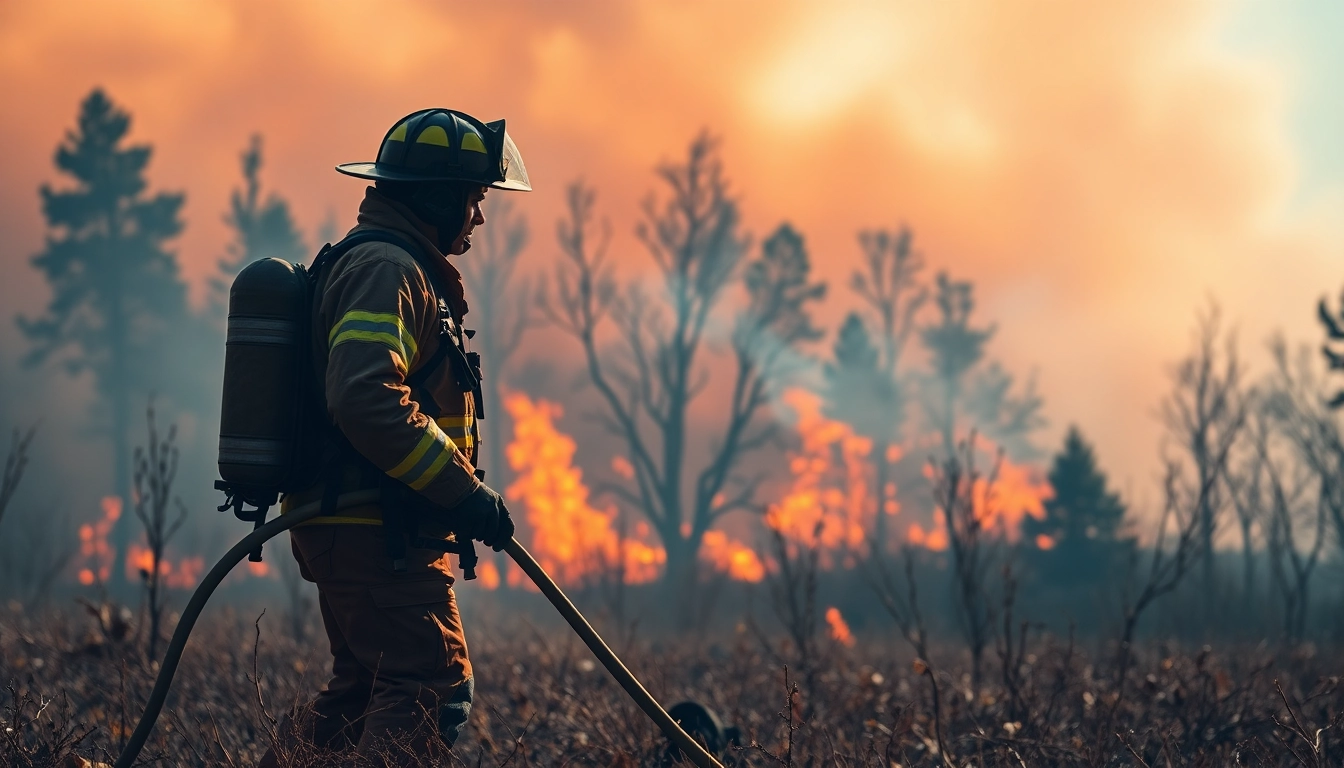What Are Wildfire Events?
Definition and Overview
Wildfire events, often referred to simply as wildfires, are uncontrolled fires that spread across forests, grasslands, and other types of vegetation. These events can range from small ground fires to massive infernos that consume thousands of acres, particularly in dry, windy conditions. The wildfire events that occur each year dramatically impact ecosystems, wildlife habitats, and human communities. Understanding their nature, causes, and effects is crucial for effective management and preparedness.
Different Types of Wildfire Events
Wildfires can be categorized based on their spread and intensity. The primary types include:
- Surface Fires: These are the most common types of wildfires and burn on the forest floor, affecting leaf litter, grasses, and shrubs. They are typically less intense and can be beneficial for clearing out underbrush, promoting new growth.
- Crown Fires: Crown fires spread rapidly through the tops of trees and are more intense than surface fires. They can be incredibly destructive and are often fueled by strong winds and dry conditions.
- Ground Fires: These fires burn below the surface, in the organic materials and peat of the soil. Ground fires can smolder for long periods and are often difficult to detect until they surface.
- Spot Fires: These fires occur when embers from a larger fire blow to a different location and ignite new flames. They can create multiple fire fronts that complicate fire response efforts.
Key Terms and Concepts
Several key terms are essential for understanding wildfire events:
- Fire Behavior: Referring to how a fire develops and spreads, influenced by factors like weather, topography, and vegetation.
- Fire Regime: The pattern, frequency, and intensity of wildfires that occur in an area over a long period. Different ecosystems have varying fire regimes.
- Fire Weather: Atmospheric conditions conducive to fire ignition and spread, including temperature, humidity, wind speed, and precipitation.
Causes of Wildfire Events
Natural Causes
Wildfires can be sparked by natural phenomena. Lightning strikes are among the most prevalent natural causes. These strikes can ignite dry vegetation during thunderstorms, particularly in remote forested areas.
Human-induced Causes
Human activities are responsible for a significant percentage of wildfires. Key causes include:
- Campfires: Improperly extinguished campfires left burning can lead to wildfires.
- Cigarettes: Discarding lit cigarettes can set dry vegetation ablaze.
- Equipment Ignition: Sparks from machinery, vehicles, or power lines can start fires.
Climate Change Impacts
Climate change significantly impacts wildfire occurrences and intensity. Rising temperatures, prolonged droughts, and shifting precipitation patterns create favorable conditions for wildfires. Studies have shown that areas previously considered at low risk are now facing increasing wildfire threats.
Effects of Wildfire Events
Environmental Consequences
The environmental impact of wildfires can be devastating, resulting in loss of biodiversity, habitat destruction, and soil degradation. Recovery in severely affected ecosystems may take years, or even decades.
Economic Impacts
Wildfires also have substantial economic implications. The costs of firefighting, loss of property, and the impact on local economies can be significant. Insurance claims post-wildfire can overwhelm insurers, while affected communities often face long-term economic challenges.
Health Risks and Safety Concerns
Wildfires pose critical health risks, not only due to the immediate dangers of fire but also due to smoke inhalation. Wildfire smoke can lead to respiratory issues and exacerbate existing health conditions such as asthma. Additionally, the psychological impact of experiencing a wildfire can lead to long-term mental health issues.
Preparing for Wildfire Events
Individual and Community Preparedness Techniques
Preparation is vital for minimizing the damage caused by wildfires. Individuals should create defensible spaces around homes by clearing flammable materials and using fire-resistant landscaping. Communities can conduct fire drills and establish communication protocols for evacuation and resource sharing.
Emergency Kits and Evacuation Plans
Having an emergency kit ready is essential for wildfire preparedness. Critical items to include are:
- Water and non-perishable food
- First-aid supplies
- Flashlights and batteries
- Important documents in waterproof containers
- Medication and pet supplies
Additionally, families should have clear evacuation plans that outline escape routes and meeting places.
Resources and Tools for Awareness
Utilizing available resources helps communities stay informed and prepared. Local fire departments often provide educational materials. Websites dedicated to fire safety, such as the National Interagency Fire Center, offer updates and preparedness tools.
Responding to Wildfire Events
Role of Firefighters and Emergency Services
Firefighters play a critical role in managing wildfire events. Immediate response teams are often mobilized in the face of rapidly spreading fires, using techniques such as backburning and creating firebreaks to control the spread. The coordination among local and federal agencies is essential for effective firefighting efforts.
Community Response Initiatives
Community-driven initiatives provide essential resources during wildfires. Volunteer groups can assist with evacuations and provide support to those displaced. Community awareness programs can aid in pre-fire prevention by promoting proper land use and fire safety education.
Recovery and Rehabilitation Post-Wildfire
Post-wildfire recovery involves restoring affected areas and supporting impacted communities. This may include replanting native vegetation and assessing the long-term health of the ecosystem. Recovery programs often involve collaboration between governmental agencies, environmental groups, and local communities to ensure a holistic approach to rehabilitation.
